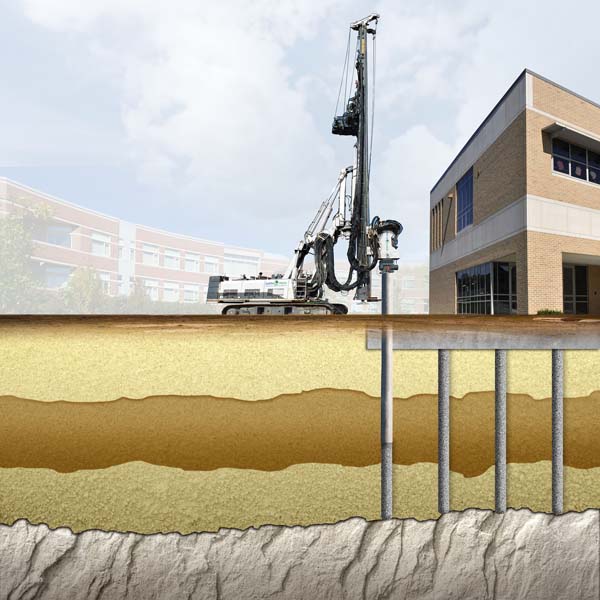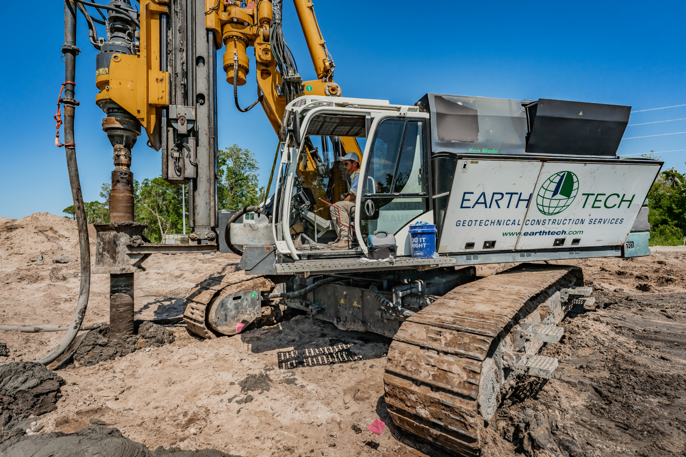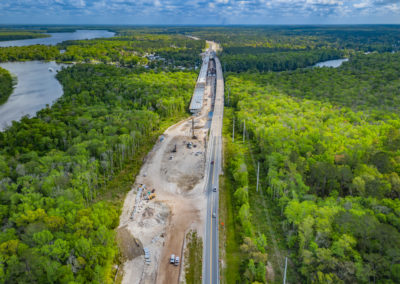Rigid Inclusions (RI’s) are grout columns installed to transfer a foundation or embankment load to a competent soil or rock bearing stratum.
RI’s are constructed by vibrating a mandrel or drilling a displacement tool to the bearing stratum. The RI column is then constructed by slowly withdrawing the mandrel or displacement tool while grout is pumped to fill the void.
The RI is terminated within a few feet of the foundation or embankment. Unlike deep piling systems, RI’s are not incorporated into a pile cap. A Load Transfer Platform (LTP) is designed and installed on top of the RI’s to transfer the load of the foundation or embankment.
Applications
- Rigid inclusions are used in soil profiles with soft, highly compressible soils such as clay, silt, organics, bay bottoms or mine deposits
- Low to mid rise new construction buildings
- Area loads such as tanks and embankments
- Slope stabilization
Construction Advantages
- Economical compared to deep foundations and does not require pile chipping, cut-off or cap
- Increased allowable soil bearing capacity reduces the size of foundations
- In the Tampa Bay area, Earth Tech can provide and deliver grout from its ready-mix plant to maintain project schedule
- Outside of the Tampa Bay area, Earth Tech can supplement third party grout deliveries with its own ready-mix trucks to maintain project schedule
What to Expect
- Earth Tech will provide a signed and sealed design indicating the treatment
- Site clearing and access preparation precede Rigid Inclusions
- Large quantities of grout are required, thus site access for ready-mix delivery is needed
- Spoils may accumulate on the surface and must be disposed of
- Typically this work is performed under a performance specification, with criteria specified regarding bearing capacity and settlement
- Load testing can be used to verify design criteria
- Earth Tech’s design will include LTP details to be constructed by others
- Final site grading, spoils clean up and foundation construction follow Rigid Inclusions














